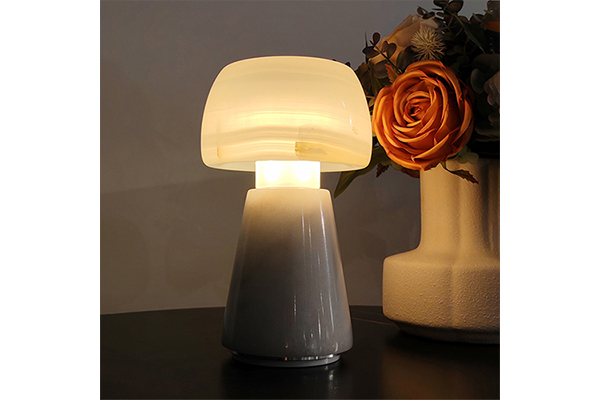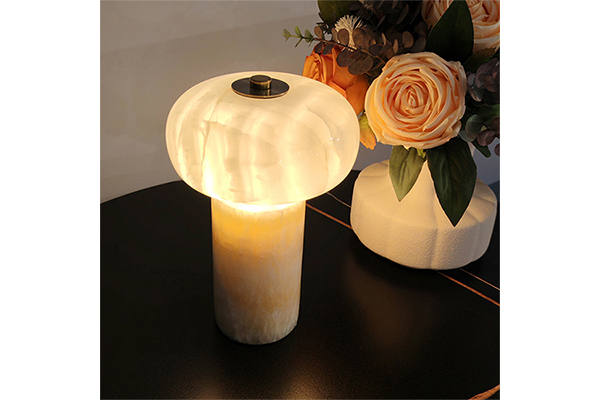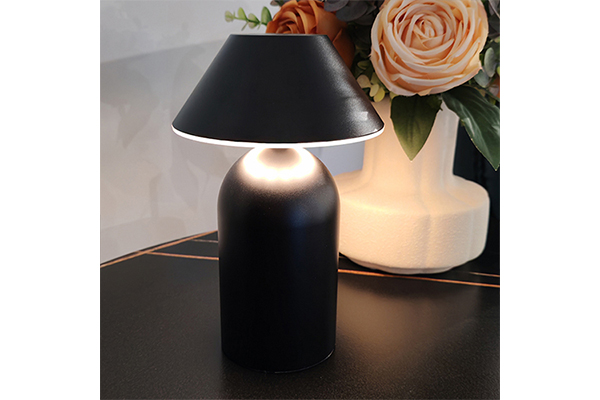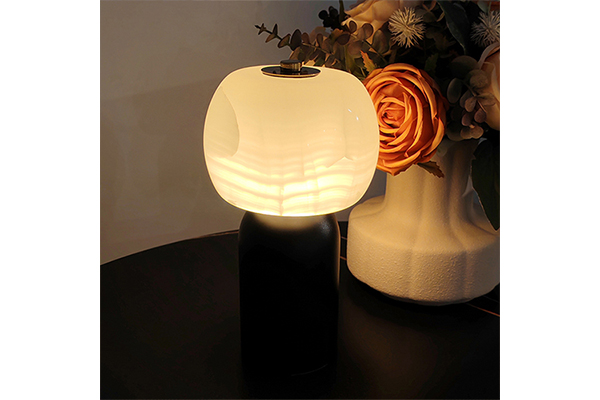What are the differences in the application of stone lamps in different functional areas of the hotel?
Release Time : 2025-06-18
In modern catering and hotel design, lighting is not only a satisfyer of functional needs, but also an important element in creating atmosphere and enhancing the texture of space. As a type of lamp that combines natural materials and artistic beauty, stone lamps are increasingly being used in high-end commercial spaces such as restaurants and hotels. With its unique texture, warm light and natural environmental protection characteristics, it injects a unique artistic atmosphere into the space.
As the name suggests, stone lamps are lamps made of natural stone as the lamp body material. Common stone materials include marble, sandstone, limestone, jade, etc. These materials not only have good light transmittance, but also can present soft and warm light and shadow effects under light. Compared with traditional metal or glass lamps, stone lamps can convey a calm, restrained and tasteful spatial temperament, especially suitable for creating a warm, private and elegant dining or accommodation environment.
In the restaurant environment, stone lamps are often used as table lamps, wall lamps, chandeliers or decorative light strips. The light they emit is not dazzling, which can effectively relieve the visual fatigue of diners, while enhancing the expressiveness of food colors, making the entire dining experience more comfortable and pleasant. For example, in Chinese or neo-Chinese style restaurants, designers often choose marble stone lamps with textures, matched with warm-toned light sources, to create a classical yet modern dining atmosphere; while in Western high-end restaurants, they prefer to use translucent jade stone lamp covers, and use built-in LED light sources to achieve a hazy and romantic light and shadow level.
As a place that focuses on customer experience and space quality, hotels are particularly particular about the selection of lamps. Stone lamps are often used in lobbies, corridors, guest rooms, SPA areas and other areas due to their unique material properties. For example, setting up large stone table lamps or chandeliers in the hotel lobby can not only guide the sight, but also highlight the brand tone and cultural taste; installing small stone lamps at the bedside or bathroom area of the guest room can create a quiet and relaxing private space to help guests rest and relax better.
From an environmental perspective, stone lamps are processed products made from renewable resources. Their raw materials are natural and do not contain harmful chemicals, which conform to the concept of green buildings and sustainable development. In addition, due to the high durability and stability of stone itself, stone lamps are not easy to age, deform or fade, and their service life far exceeds that of many artificial synthetic material lamps, making them more cost-effective in the long run.
It is worth mentioning that with the development of modern technology, today's stone lamps have incorporated more technological elements while retaining their natural texture. For example, the use of energy-saving LED light sources, intelligent dimming systems, wireless control and other methods enables stone lamps to maintain their beauty while having higher energy efficiency and ease of use. Some high-end customized models also combine carving, inlaying, splicing and other processes to give the lamps stronger artistic expression and become the visual focus in the space.
Stone lamps are becoming an important choice in restaurant and hotel lighting design with their unique charm of natural materials, comfortable lighting experience and high adaptability to high-end spaces. It is not only a lighting tool, but also a work of art, bringing new possibilities of both functional and aesthetic value to modern commercial spaces.
As the name suggests, stone lamps are lamps made of natural stone as the lamp body material. Common stone materials include marble, sandstone, limestone, jade, etc. These materials not only have good light transmittance, but also can present soft and warm light and shadow effects under light. Compared with traditional metal or glass lamps, stone lamps can convey a calm, restrained and tasteful spatial temperament, especially suitable for creating a warm, private and elegant dining or accommodation environment.
In the restaurant environment, stone lamps are often used as table lamps, wall lamps, chandeliers or decorative light strips. The light they emit is not dazzling, which can effectively relieve the visual fatigue of diners, while enhancing the expressiveness of food colors, making the entire dining experience more comfortable and pleasant. For example, in Chinese or neo-Chinese style restaurants, designers often choose marble stone lamps with textures, matched with warm-toned light sources, to create a classical yet modern dining atmosphere; while in Western high-end restaurants, they prefer to use translucent jade stone lamp covers, and use built-in LED light sources to achieve a hazy and romantic light and shadow level.
As a place that focuses on customer experience and space quality, hotels are particularly particular about the selection of lamps. Stone lamps are often used in lobbies, corridors, guest rooms, SPA areas and other areas due to their unique material properties. For example, setting up large stone table lamps or chandeliers in the hotel lobby can not only guide the sight, but also highlight the brand tone and cultural taste; installing small stone lamps at the bedside or bathroom area of the guest room can create a quiet and relaxing private space to help guests rest and relax better.
From an environmental perspective, stone lamps are processed products made from renewable resources. Their raw materials are natural and do not contain harmful chemicals, which conform to the concept of green buildings and sustainable development. In addition, due to the high durability and stability of stone itself, stone lamps are not easy to age, deform or fade, and their service life far exceeds that of many artificial synthetic material lamps, making them more cost-effective in the long run.
It is worth mentioning that with the development of modern technology, today's stone lamps have incorporated more technological elements while retaining their natural texture. For example, the use of energy-saving LED light sources, intelligent dimming systems, wireless control and other methods enables stone lamps to maintain their beauty while having higher energy efficiency and ease of use. Some high-end customized models also combine carving, inlaying, splicing and other processes to give the lamps stronger artistic expression and become the visual focus in the space.
Stone lamps are becoming an important choice in restaurant and hotel lighting design with their unique charm of natural materials, comfortable lighting experience and high adaptability to high-end spaces. It is not only a lighting tool, but also a work of art, bringing new possibilities of both functional and aesthetic value to modern commercial spaces.










